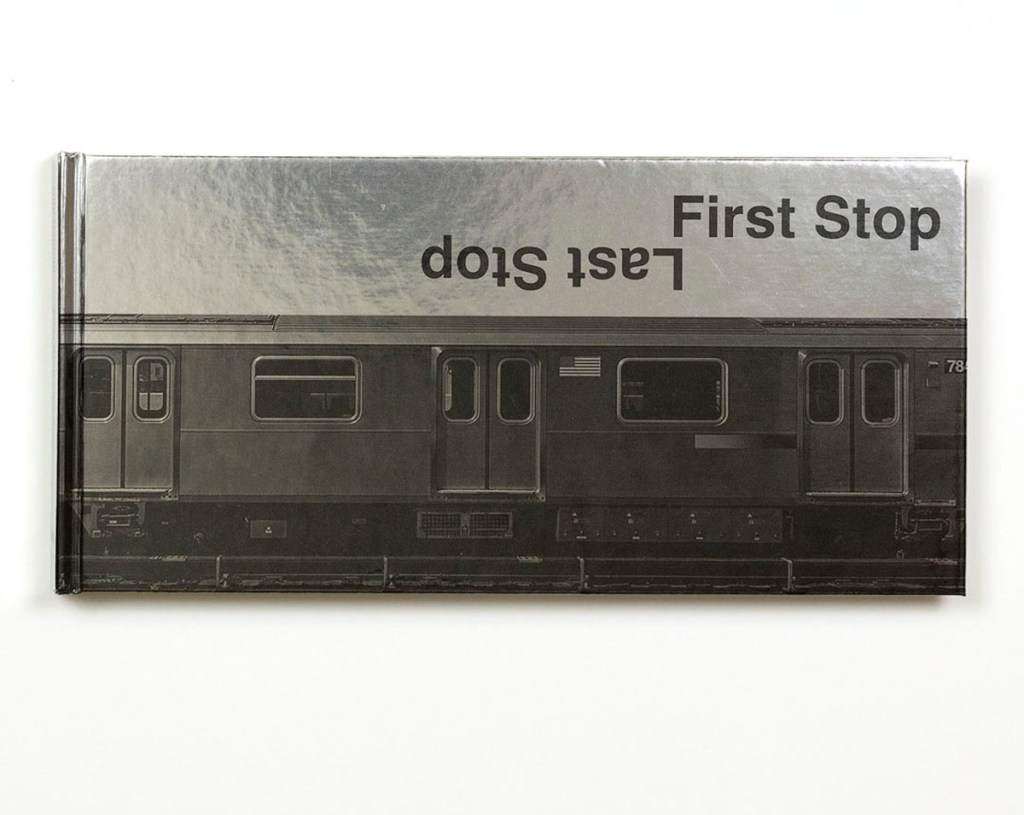
Review by Paul Anderson •
With its 26 routes, the New York City subway system serves as connective tissue for the vast New York metropolitan area. The photographer Rita Nannini visited all 52 endpoints of this system over a period of 10 years, photographing the people, trains, stations, and neighborhoods at each and every terminal point for her photobook First Stop Last Stop. This was a major photographic project, encompassing some 8,000 photographs. The 160-page book presents a curated subset of those photographs. It is a portrait of a large and complex transportation network embedded in a major city.
Her well-defined photographic goal nicely bounded the project, yet the goal was not too constraining. The decision to concentrate on the end points of each subway line moved the photographic focus away from city center, more off the beaten path. Also, the images are as much about the neighborhoods surrounding these end-of-the-line terminals as they are about the terminals and passengers themselves. The most compelling pictures are those that include groups of people, providing insight into neighborhood character and diversity. Furthermore, the book is sprinkled with images that literally show railroad infrastructure at the end of the tracks, a subtle reminder of the project’s goal.
At a time when public transportation systems are suffering ridership losses in the wake of the COVID pandemic, it is refreshing to see a set of photographs that celebrate the utilization of these systems. Paging through the book is like sitting on a bench inside or outside a subway terminal watching people pass by. A significant amount of energy and time go into designing, building and operating a transit system, and this book puts a nice spotlight on them.
The Photobook Journal recently reviewed two other photography books which either completely or partially feature subway systems. The first is Subwaygram by photographer Chris Maliwat. He concentrated on the humorous and colorful personalities of the New York subway. The second book is After Dark by Liam Wong, and he took a number of very cinematic night time photographs around Asian subway systems, especially Tokyo. Noting that Nannini in First Stop Last Stop studied the more quotidian aspects of the subway, we can compare the ways in which these three different photographers approached the same subject matter – either emphasizing the colorful, the quotidian, or the cinematic.
This book is organized by rail line, which is of great help to readers not familiar with this system. There are three consecutive two-page spreads dedicated to each rail line: the opening two-page spread provides the name of the line and an introductory image, the next two pages provide images from the ‘first stop’ on the line, and the last two provide images from the ‘last stop.’ A folded map of the entire subway system is provided as an insert. Occasional field notes accompany the images.
First Stop Last Stop is nicely printed and has unusually wide proportions. Its very wide aspect ratio suggests the proportions of a subway rail car, which is rather fitting, and the photography has been skillfully worked into this wide format. This book would be enjoyed by those interested in travel by rail, street photography, and the city of New York.
____________
Paul Anderson is a photographer/digital artist, working in Hermosa Beach, CA.
____________
First Stop Last Stop – Rita Nannini
Photographer: Rita Nannini (resides in Brooklyn, New York)
Essay by Virginia Hines, Afterword by Rita Nannini
Language: English
Publisher: Workshop Arts; Copyright © 2023
Hardcover, 160 pages, 11.8 x 5.46 inches. ISBN 978-1-959684-03-9
Design: Caleb Cain Marcus, Luminosity Lab
____________









Articles and photographs published in the PhotoBook Journal may not be reproduced without the permission of the PhotoBook Journal staff and the photographer(s). All images, texts, and designs are under copyright by the authors and publishers.
Leave a comment